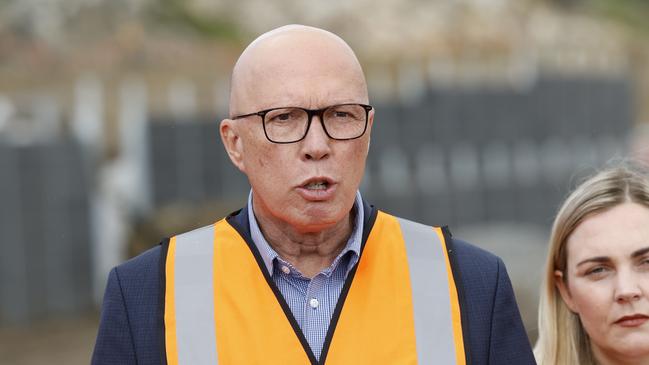Anthony Albanese and Peter Dutton’s income tax policies explained
A sugar hit or more money in your pocket long term? Labor and the Coalition have unveiled their income tax policies – compare and calculate how much you’ll save.
Federal Election
Don't miss out on the headlines from Federal Election. Followed categories will be added to My News.
Peter Dutton is betting Australians will choose a big one-off tax refund over Anthony Albanese’s plan to permanently put more money into workers’ pockets over time, with both claiming they deliver the better cost of living relief.
Labor and the Coalition have unveiled competing election policies to help households after years of higher prices.
USE THE TABLE BELOW TO CALCULATE HOW MUCH YOU’LL GET
The Opposition Leader is opting to give ten million workers up to $1200 once in September next year, while the Prime Minister has committed to twice cutting the lowest tax bracket rate from July 2026, saving most taxpayers $1340 within four years
The Prime Minister’s two tax cut “top-ups” are slow to hit Australians’ bank accounts, but will mean workers benefit longer term though at annual hit to the budget bottom line of $7 billion a year once fully in effect.
The Coalition’s offset costs $10bn once in 2026-27, but then has no further impact on government revenue.
Under Mr Dutton’s plan, six million workers earning between $50,000 and $104,000 a year would receive the full $1200 tax offset in September 2026.
People earning $35,000 will receive a partial offset of $265, while those on $40,000 will get $520 and people on $45,000 will get $945.
The offset also tapers off for higher income earners, with people on $110,00 to receive $1020, workers on $120,000 to get $720 and those on $140,000 to get $120.
Australians earning above this would not get any of the offset.

Under Labor, cutting the lowest tax bracket rate by one point to 15 per cent from July 1, 2026 will deliver a $5-a week saving totalling $268 a year for all workers earning $45,000 and above.
A year later from July 2027 this bracket will be dropped again to 14 per cent, delivering an annual saving of $536 to these workers, meaning by 2028-29 most Australian taxpayers will have pocketed an extra $1340.
People on $25,000 a year would be $340 a year better off over four years, while people on $35,000 would be $840 better off.
Mr Dutton said his temporary relief would be felt faster and would not deliver a long-term hit to the budget.
He said the tax offset and the Coalition’s 12-month 25 cents a litre cut to petrol, which combined costs about $16bn, reflected the fact “Australians need help now”.
“We don’t lock that in,” Mr Dutton said. “We provide support now.”

But Treasurer Jim Chalmers said only Labor would deliver both “immediate and ongoing help” with the cost of living.
“Peter Dutton is going to borrow and burn another $10bn but provide no ongoing help with the cost of living, and claw it back with permanently higher income taxes,” he said.
AMP chief economist Shane Oliver said comparing the two party’s offerings, Labor’s was “better” from a tax policy point of view, while the Coalition’s plan was “better” from a “managing the budget” perspective.
“Labor’s change is more structural, durable and deals – albeit very partly – with bracket creep,” he said.
“It’s structurally sounder as it doesn’t do the sugar hit all at once.”
Mr Oliver said Mr Dutton’s one-off substantial help for Australians would be better for the budget, provided the Coalition went through with its plan to dump the measure after one year.
“There is a tendency once these things start up for them to keep going because of the hit that is caused when they come to an end,” he said.
On which voters would go for, Mr Oliver said it depended on individual opinion.
“One’s a bigger upfront payment and the other is more spread out,” he said.
More Coverage
Originally published as Anthony Albanese and Peter Dutton’s income tax policies explained





